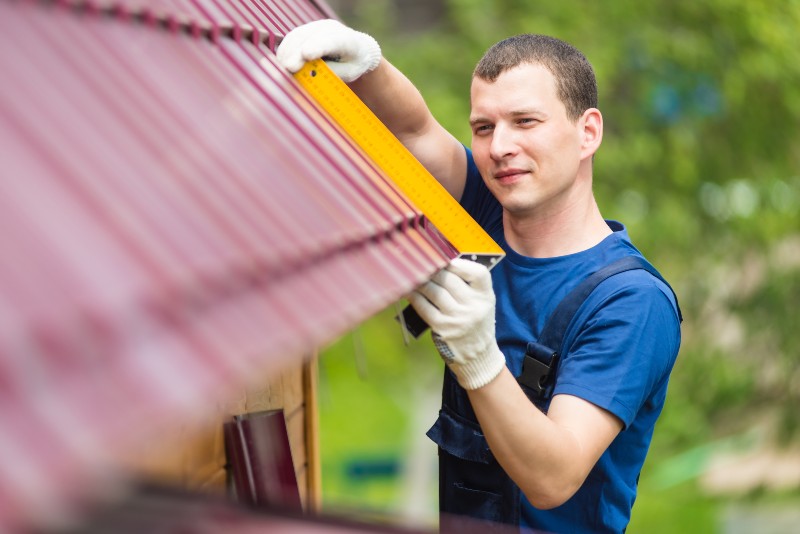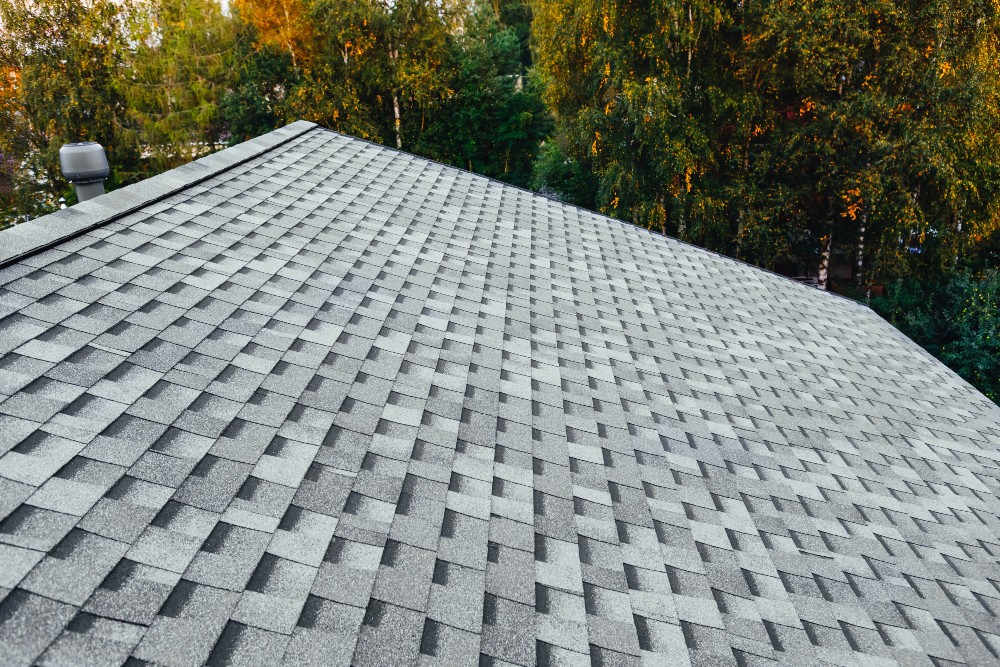If you’re planning to get your roof repaired and have begun getting estimates, you’ve likely heard the term “square” used in reference to your roof’s size. What exactly is this term and why does it matter? Read on to learn the ins and outs of a roofing square.
What Is it?
A roofing square is a term contractors use to quantify the scale of a roofing project. How big is a roofing square? Basically, one square equates to the material required to cover 100 square feet of area. For instance, a 2,400 square foot roof is 24 square.
While it’s nice to understand the meaning of the term, there’s a lot more to know about roofing squares. The more you know the less likely you are to waste money on material costs.
How Much Does One Roofing Square Cost?
In the roofing industry, the term “square” is primarily used in relation to ordering and pricing bundles of roofing shingles. With this in mind, it makes sense to explain the average cost of a square of roofing material.
Prices will vary based on regions and a whole host of other factors. For the sake of this article, however, let’s assume that the average roofer will price their projects between $5 and $10 per square foot. You can convert the price per square foot to price per square by multiplying the first number by 100. In this instance, the cost of a roofing square will fall between $500 and $11,000.
With that said, prices will vary based on a number of factors, including:
- A property’s geographic location
- The size of the roof
- The chosen roofing material
- The quality of the roofing material
- Current market conditions for roofing materials
- The terms of a warranty post-replacement
- How fast you want the roof replaced
- The roofing contractor’s certifications, schedule and level of experience

Determining Roof Square Size
While roof square size may be straightforward, it’s not always a simple calculation. Although one roofing square is equal to 100 square feet, sometimes you have to factor in what’s known as “headlap.”
This refers to the overlap of a row of roofing shingles on top of the following row, which shields against moisture penetration. Due to headlap, one square of shingles never actually equals 100 square feet of roofing. In other words, to cover 100 square feet of roofing area, you will usually need more than 100 square feet of material.
Another reason one square of shingles may not equal 100 square feet of roofing has to do with the shape and style of a roof. For instance, while measuring a standard gable-style roof might be fairly straightforward; it can be a bit more complicated measuring a mansard or gambrel roof. Waste is a common issue when measuring intricate types of roofing. This occurs when shingles need to be trimmed away to accommodate tighter spaces along dormers and valleys.
With more complicated roof styles, not every square foot of measurement is equal. Still, overall, a roofing square helps determine the needs for simple and complex roofing projects, even if the final measurements aren’t always 100% precise.
Getting Help from an Expert
When it comes time to budget for a new roof, you want to know exactly how much materials you will need so you don’t buy too little or overpay for too much. If you are working with an experienced roofing contractor, you will have the peace of mind that comes with knowing the correct amount of roofing materials will get delivered. You will also enjoy the confidence that your roof repair or installation will go according to plan.
Don’t Wait Until it’s Too Late
The roof is a house’s first line of defense against harsh elements. Yet it usually goes unnoticed until it starts to leak. By then, even small leaks may have caused extensive damage due to mold infestation and wood rot. With this in mind, it’s important to inspect, repair or replace your roof long before it starts to fail.
For decades, A to Z Roofing has specialized in residential roofing, restoration and repair. A locally owned Colorado business, we’ve operated continuously throughout the Denver metro area and the entire Front Range for nearly a quarter of a century. During this time, we’ve served the needs of homeowners and local businesses, providing expert service using top-quality products. Contact our team of attentive professionals to learn how we can restore, repair or replace your damaged or aging roof.

